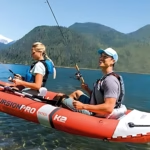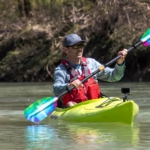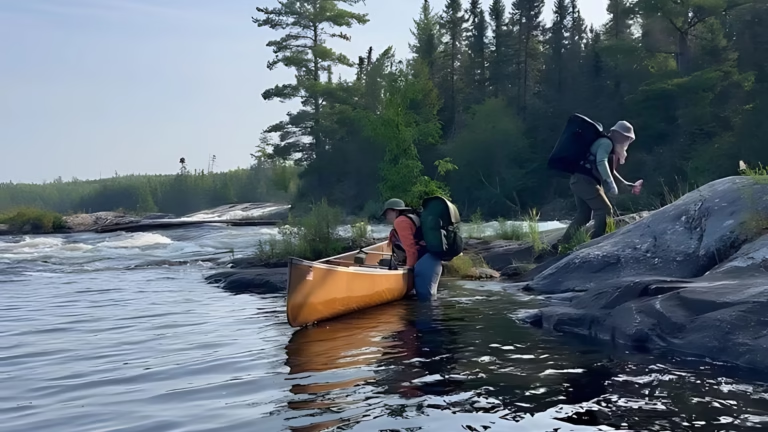To pack a kayak for multi-day trips, distribute weight evenly and prioritize essential gear. Use dry bags to keep items waterproof.
Packing a kayak for a multi-day trip requires thoughtful planning and strategic organization. Start by making a checklist of essential items, including safety gear, food, water, and camping equipment. Place heavier items, like water and food supplies, in the center of the kayak to maintain balance.
Use dry bags to store clothing, electronics, and other gear that must stay dry. Distribute weight evenly to prevent tipping and ensure smooth paddling. Keep frequently used items, like snacks and navigation tools, within easy reach. Proper packing ensures a safe, enjoyable, and stress-free kayaking adventure.
Planning Your Trip
Proper planning ensures a successful multi-day kayaking trip. It helps avoid unexpected challenges. Below, we discuss key steps for effective trip planning.
Research The Route
Start by researching your chosen route. Know the distance you’ll cover each day. Identify potential campsites along the way. Look for water sources and rest points. Gather information on any difficult sections. Check for restrictions or permits required. Create a detailed map of your route.
Check Weather Conditions
Weather can change quickly, especially on water. Always check the forecast before your trip. Use reliable sources like local weather websites. Monitor for storms, strong winds, or extreme temperatures. Prepare for potential weather changes. Pack accordingly with appropriate gear.
Choosing The Right Gear
Packing a kayak for a multi-day trip needs careful planning. The right gear ensures a safe and enjoyable adventure. This section will guide you through selecting the best equipment for your journey.
Kayak Selection
Choosing the right kayak is crucial. There are different types of kayaks available:
- Touring kayaks: Ideal for long trips and larger storage space.
- Sea kayaks: Best for open water and rough conditions.
- Recreational kayaks: Suitable for calm waters and shorter trips.
Ensure your kayak has ample storage. Look for compartments to keep your gear dry. Stability and comfort are also key factors.
Essential Equipment
Having the right equipment makes your trip more comfortable. Here are some essential items:
- Paddle: Choose a lightweight paddle for easy maneuvering.
- Personal flotation device (PFD): Always wear a PFD for safety.
- Dry bags: Keep your belongings dry with waterproof bags.
- Tent: A lightweight, compact tent for overnight stays.
- Sleeping bag: Ensure it’s suitable for the expected temperatures.
- First aid kit: Be prepared for any minor injuries.
- Navigation tools: Maps, compass, or GPS to stay on track.
- Food and water: Pack non-perishable food and sufficient water.
Remember to pack light but smart. Distribute the weight evenly in your kayak. This helps maintain balance and stability on the water.
| Item | Importance |
|---|---|
| Paddle | High |
| PFD | High |
| Dry Bags | Medium |
| Tent | Medium |
| Sleeping Bag | Medium |
| First Aid Kit | High |
| Navigation Tools | High |
| Food and Water | High |
Prepare well for your multi-day kayak trip. Choose the right gear for a memorable adventure.
Organizing Your Packing
Properly organizing your gear is essential for a successful multi-day kayak trip. Efficient packing ensures you have everything you need and keeps your kayak balanced. Follow these steps to make sure your trip is smooth and enjoyable.
Create A Packing List
Start by creating a detailed packing list. This helps you remember all necessary items. A packing list ensures you don’t forget important gear. Here is an example of a packing list:
- Paddle
- Life jacket
- First aid kit
- Dry bags
- Camping stove
- Food and water
- Tent and sleeping bag
- Clothing
- Navigation tools
Categorize Items
Organize your items into categories. This makes packing and finding things easier. Use the following categories:
| Category | Items |
|---|---|
| Essential Gear |
|
| Camping Gear |
|
| Food and Water |
|
| Clothing |
|
| Navigation |
|
By creating a packing list and categorizing items, you ensure nothing is forgotten. This method helps you stay organized and keeps your kayak balanced. Happy paddling!
Packing The Kayak
Packing a kayak for multi-day trips can be tricky. Proper packing ensures safety, balance, and easy access to essentials. This guide will help you pack your kayak efficiently.
Weight Distribution
Proper weight distribution is crucial for a smooth paddle. Distribute the weight evenly to maintain balance.
| Location | Items |
|---|---|
| Front | Light items like sleeping bag and clothes |
| Center | Heavy items like water and food supplies |
| Back | Medium weight items like tent and cooking gear |
Balance the kayak by placing heavier items in the center. Keep lighter items at the front and back.
Securing Items
Securing items is vital to avoid losing gear. Use waterproof bags and secure them tightly.
- Use bungee cords or straps to tie down items.
- Store essential items in easy-to-reach places.
- Ensure all bags are sealed properly.
Keep safety gear and navigation tools within reach. This ensures quick access in emergencies.
Pack smartly and enjoy your multi-day kayak trip!
Waterproofing Your Gear
Keeping your gear dry is crucial for a successful multi-day kayak trip. Water can damage your equipment and make your trip uncomfortable. Proper waterproofing ensures your belongings stay safe and dry.
Dry Bags
Dry bags are essential for any kayak trip. They come in different sizes and materials. Use small dry bags for items like phones and wallets. Bigger dry bags are great for clothes and sleeping bags.
- Choose dry bags with roll-top closures for the best seal.
- Label your dry bags to easily find items.
- Use different colors to organize your gear.
Properly pack your dry bags to maximize space. Squeeze out excess air before sealing. This helps the bag fit better in your kayak.
Waterproof Containers
Waterproof containers offer extra protection for delicate items. These are great for electronics and important documents. Use hard-shell containers for added safety.
- Place cameras and GPS devices in waterproof containers.
- Store first-aid kits in watertight boxes.
- Use plastic cases for food storage to avoid leaks.
| Item | Recommended Container |
|---|---|
| Phone | Small Dry Bag |
| Clothes | Large Dry Bag |
| Camera | Hard-Shell Waterproof Container |
| Food | Plastic Waterproof Box |
Secure your containers with bungee cords inside the kayak. This prevents them from moving around and getting damaged. Always double-check the seals before starting your trip.
Food And Water Storage
Packing a kayak for a multi-day trip requires careful planning. Food and water storage are crucial aspects to consider. Proper storage ensures you stay nourished and hydrated throughout your adventure.
Meal Planning
Effective meal planning ensures you have enough food without overloading your kayak. Pack lightweight, non-perishable items like:
- Dehydrated meals
- Instant noodles
- Granola bars
- Dried fruits
- Nuts and seeds
Organize meals in waterproof bags or containers. Label each meal for easy access. Use a table to plan your meals:
| Day | Breakfast | Lunch | Dinner |
|---|---|---|---|
| Day 1 | Oatmeal | Peanut butter sandwich | Dehydrated pasta |
| Day 2 | Granola | Trail mix | Instant noodles |
Hydration Solutions
Staying hydrated is vital during your trip. Use these hydration solutions to ensure you have enough water:
- Carry a portable water filter or purifier.
- Bring reusable water bottles or hydration bladders.
- Store extra water in collapsible containers.
Consider packing electrolyte tablets or powders to replenish lost minerals. Store these in a dry bag for easy access.
By planning meals and hydration solutions carefully, your multi-day kayak trip will be safe and enjoyable.
Safety Precautions
Ensure gear is waterproofed and balanced. Securely fasten all items to prevent shifting. Keep essential safety equipment within reach.
Packing a kayak for a multi-day trip requires more than just gear and supplies. Safety precautions are essential to ensure a successful and safe adventure. Here are some critical items and practices to keep in mind.
First Aid Kit
A well-stocked First Aid Kit can be a lifesaver. Make sure it includes:
- Bandages of various sizes
- Antiseptic wipes and ointment
- Pain relievers
- Scissors and tweezers
- Gauze pads and medical tape
Store the kit in a waterproof container. Make it easily accessible. Check the contents before every trip to ensure nothing is expired or missing.
Communication Devices
Staying connected during your trip is crucial. Always carry reliable communication devices such as:
| Device | Description |
|---|---|
| VHF Radio | Useful for marine communication |
| Satellite Phone | Works in remote areas |
| Personal Locator Beacon (PLB) | Sends your location to rescuers |
Keep these devices in waterproof bags. Test them before setting out. Ensure batteries are fully charged. By prioritizing safety, your multi-day kayak trip will be both enjoyable and secure. “`
Environmental Considerations
Packing your kayak for a multi-day trip involves planning. Think about the environment too. Your actions can impact nature. Be mindful of your surroundings. This ensures the beauty of nature for future adventurers.
Leave No Trace
Follow the Leave No Trace principles. They help keep nature pristine.
- Pack out all trash.
- Use biodegradable soap.
- Avoid disturbing plants.
- Camp on durable surfaces.
Keep campsites small. Use existing trails and campsites. Dispose of waste properly. This includes human waste. Carry a portable toilet if possible. These steps protect the environment.
Respect Wildlife
Respecting wildlife is crucial for a healthy ecosystem.
- Observe animals from a distance.
- Do not feed wildlife.
- Store food securely.
- Avoid loud noises.
Keep your food in bear-proof containers. This prevents animals from getting used to human food. Maintain a quiet presence. Loud noises can scare animals. Respect their space. This keeps both you and the animals safe.
By following these tips, you help preserve the natural beauty. Your actions make a difference. Be a responsible adventurer. Enjoy your trip while protecting the environment.
Frequently Asked Questions
What Essentials Should I Pack For A Kayak Trip?
Pack essentials like a dry bag, first aid kit, navigation tools, food, water, and clothing. Safety gear is also crucial.
How Do I Keep My Gear Dry?
Use dry bags or waterproof containers. Seal them tightly to prevent water from entering. Store them securely in the kayak.
What Is The Best Way To Organize Kayak Storage?
Organize by weight and frequency of use. Keep heavy items low and centered. Store frequently used items within easy reach.
How Much Food And Water Should I Bring?
Bring enough food and water for the entire trip. Plan for extra in case of emergencies. Stay hydrated and well-nourished.
Conclusion
Packing a kayak for multi-day trips is essential for a successful adventure. Prioritize safety and organization. Use dry bags to keep gear waterproof. Balance your load to ensure stability on water. Follow these tips to enjoy a seamless kayaking experience.
Happy paddling and safe travels!






